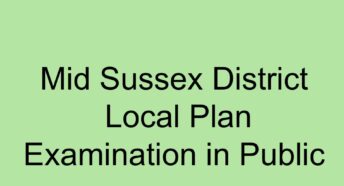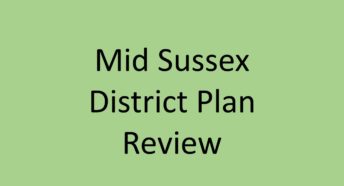The good and the bad about rural exception sites
The principle of “rural exception” allows for the building of affordable homes in Sussex; however, as Michael Brown writes, it’s open to abuse.
CPRE Sussex supports the rural exception site principle common to Sussex Local Plans as a broadly effective way to promote sustainable small-scale development of affordable housing in sensitive designated locations such as the South Downs National Park and the High Weald AONB and in other communities around the county. We support Community Land Trusts set up to allow land in suitable locations to be put to community use by ensuring affordability in perpetuity.
The purpose of a rural exception site is to enable the building of affordable homes needed by local people on sustainable village sites. It is called an exception site as it permits an exception to the typical Local Plan policy protecting open countryside against development. It is a key part of the purpose of a rural exception site that the development be community-led or supported by the relevant parish council who are best placed to know best what affordable housing is needed locally, of what type, and the suitability of the site compared to other alternatives. Ideally the site will have been identified as an exception site suitable for development in a neighbourhood plan.
However, it is a system that is open to abuse, as Mid Sussex District Council (MSDC) has identified. Fairfax Properties, who describe themselves as experts in land acquisition planning and development and are active across West Sussex, have been seeking to persuade MSDC to treat two of their sites in Horsted Keynes and Ashurst Wood as rural exception sites for planning application purposes.
True, in each case Fairfax was offering to build at least 85% affordable homes on each site. But in neither case is the site identified as appropriate for development, in neither case has Fairfax identified that its development proposals would satisfy a local housing need, and in neither case has Fairfax consulted with either MSDC’s housing department, the parish council or local residents.
The danger of abuse lies in the risk that, once the principle of development at a rural location has been established, a developer will then seek to exploit that fact to obtain permission for a far larger commercial development of market homes there. That is exactly what happened in Lower Horsebridge, a village of 60 homes near Hailsham, where a developer, having received permission for 32 affordable homes using the rural exception site argument, returned with a revised application for 110 mostly market homes – and was given permission by Wealden District Council.
In the case of Horsted Keynes, MSDC has now refused Fairfax’s planning application, having decided that the parish council’s opposition meant that its Local Plan’s rural exception site did not apply. So MSDC applied their general countryside and High Weald protection policies and came to the decision that the proposed development would harm the High Weald countryside.
Despite CPRE Sussex’s general support for rural exception site development, we lobbied against this application because of Fairfax’s patent attempt to bend the policy to suit its own ends in respect of an out-of-the-village site that was wholly unsuited to be built over. We were concerned that permission for this site would be a stalking horse for a much larger market home development once the principle of development there had been established. We are therefore pleased that our representations to MSDC have borne fruit. Whether MSDC’s decision is appealed remains to be seen.
The Ashurst Wood application remains outstanding.
Michael Brown




